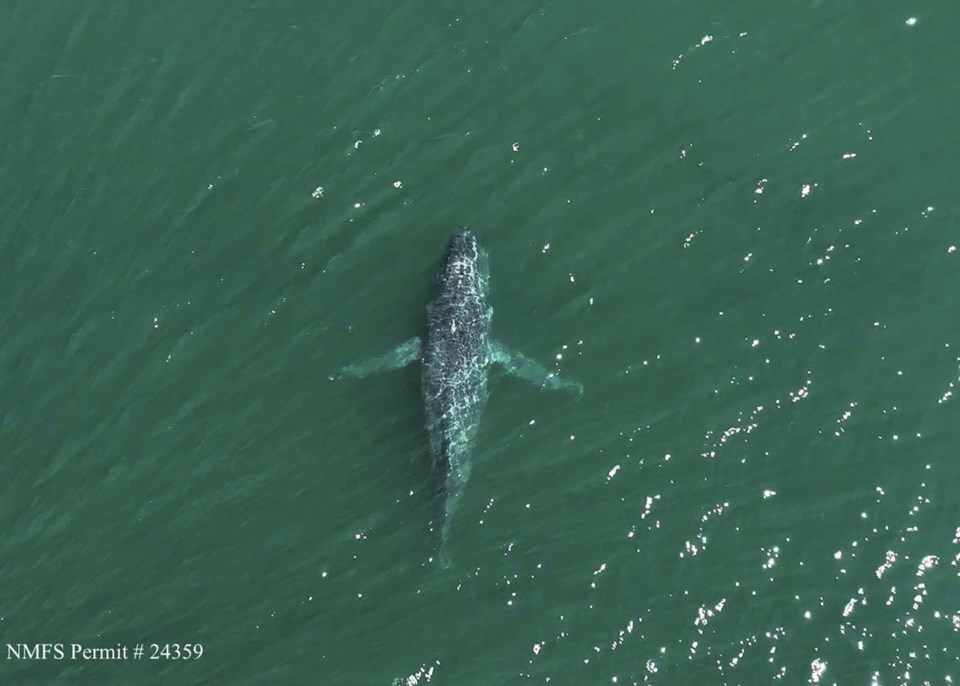A humpback whale that is missing its tail and was spotted in Washington state's inland waters likely lost its iconic flukes after becoming entangled, possibly in some kind of line or fishing gear, experts say. That loss of the flukes, used for propulsion, would appear to be a death sentence for the creature, last reported as seen in late July.
Jessica Farrer, research director with The Whale Museum on Washington's San Juan Island, was among those who responded to a sighting of the whale July 23 off a nearby island. The institute, as part of its work, helps respond to reports of stranded or distressed marine mammals and educates boaters on best practices for whale watching. Farrer had previously seen injured humpbacks but not something like this. She described the sight of the whale as heartbreaking.
It was seen in the maze of inland waters between Washington state and British Columbia called the Salish Sea.
There hasn't been another reported sighting of the whale since that day, she said.
“Everybody has an emotion when they witness a humpback whale dive, and you see those massive flukes that are over 15 feet (4.6 meters) across, and here's this whale, it’s just lost that. It's like us losing our legs," Farrer said.
Experts with whom photos and video of the whale were shared have concluded it likely lost its flukes due to entanglement, she said. But it's not known exactly what it became entangled in.
One of the hazards faced by humpbacks is entanglement in fishing gear, such as mooring lines, pots and nets, according to NOAA Fisheries. Other threats are being hit or harassed by ships or boats and the potential impacts of climate change on their food supply.
Evidence suggests most humpback whales experience entanglement at some point but often can free themselves, the agency said. The number of whales that die after they become entangled is unclear.
There were 16 confirmed humpback entanglements off the coasts of Washington, Oregon and California last year, statistics from NOAA Fisheries show. In 2016, the number of confirmed humpback entanglements topped 40, a year when a late Dungeness crab fishing season in California likely meant there was more fishing gear in areas where whales congregate, the agency has said.
Justin Viezbicke, a whale entanglement responder and NOAA Fisheries' stranding coordinator in California, said there are periodic sightings — maybe every year or two — of a whale along the West Coast seen without flukes, though he said those situations probably occur more often than they're seen.
Just recently, he said responders off southern California freed a humpback that had become entangled in gear that was digging into its flukes. Earlier this year, responders were able to free a humpback that had become entangled in fishing gear in a high-traffic area near the port of Dutch Harbor, Alaska. NOAA Fisheries described that whale as “essentially hog-tied,” and anchored in place by the line before it was cut free.
It is unlikely a humpback would survive long without its flukes, said John Calambokidis, a research biologist with Cascadia Research Collective. He said one of the tragedies of entanglements is not just that animals die but the way in which they die, which can occur slowly and involve suffering.
The actual number of entanglements could be much higher than the cases that are confirmed, he said.
In recent years there have been increased efforts to find ways to reduce entanglements, he said. California, for example, has made changes in managing its commercial Dungeness crab fisheries to try to protect whales from entanglements.
The humpback populations on the U.S. West Coast also have been increasing and overall are doing well, he said.
He contrasted that with the situation on the East Coast involving entanglements of North Atlantic right whales. NOAA Fisheries labels the North Atlantic right whale as one of the world's most endangered large whale species and entanglements as one of its greatest threats.
Becky Bohrer, The Associated Press




